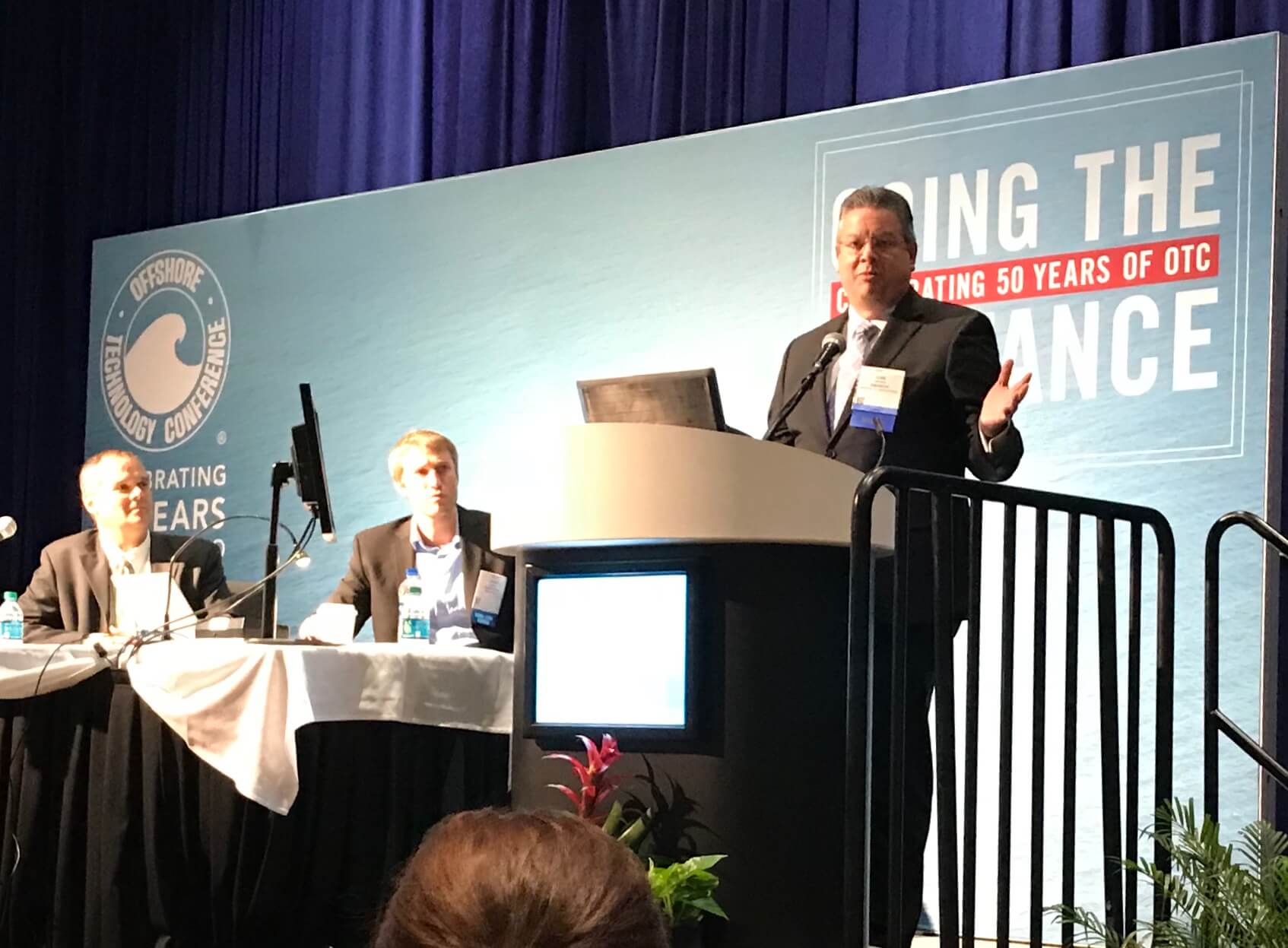 Emerson’s Jose Jimenez pinch hit for Jonas Berge who was unable to make it to the Offshore Technology Conference (OTC) to present, Digital Transformation and IIoT for Oil and Gas Production.
Emerson’s Jose Jimenez pinch hit for Jonas Berge who was unable to make it to the Offshore Technology Conference (OTC) to present, Digital Transformation and IIoT for Oil and Gas Production.
Jose opened highlight the need for oil & gas operating companies to address four key areas: safety & compliance, production, reliability & maintenance, and energy & emissions.
We’ve been undergoing a digital transformation for many years in our everyday lives. For oil & gas producers, these digital technologies are finding their way to change work practices.
From a reliability & maintenance perspective, some digital transformations are occurring in digital inspections, predictive maintenance analytics and continuous asset monitoring with wireless sensors.
From a safety & compliance perspective, digital mustering & locating, digital safety checks and digital distress call infrastructure has been enabled through Industrial Internet of Things technologies.
In production, digital operator rounds from additional sensing devices, digital logbooks and digital package unit management are changing work practices and making them more efficient.
Jose described different ways people are deploying these changes. The traditional way is with local expertise. More and more this model is switching to consolidated remote experts, or partnering with key suppliers and contracting their experts through remote Connected Services.
A digital transformation begins with data from a pervasive network of sensors measuring operational parameters. On top of this data, have purpose-built applications to focus the analytics to help identify issues to solve before they lead to safety, reliability or production issues. Purpose-built applications provide a structured way of looking at the data in dashboards to prioritize the work that is required.
Electronic logbooks can be shared with many people instead of being buried in paper. By sharing this data, collaboration and faster problem solving can take place.
Jose concluded by noting the importance to start with the business challenges in the key four areas—safety & compliance, production, reliability & maintenance, and energy & emissions. Based on current operational performance, prioritize on which areas to focus. Make sure you have the field measurements in place to produce the data to analyze for improvement. Look for focused, purpose built analytical tools to help prioritize work practices. Measure the performance improvements and prioritize other areas to digitally transform.
Visit the Oil & Gas area of Emerson.com for more on some of the ways to make these improvements and visit the Emerson oil & gas industry team in the OTC exhibit area in the Emerson booth #2261.
